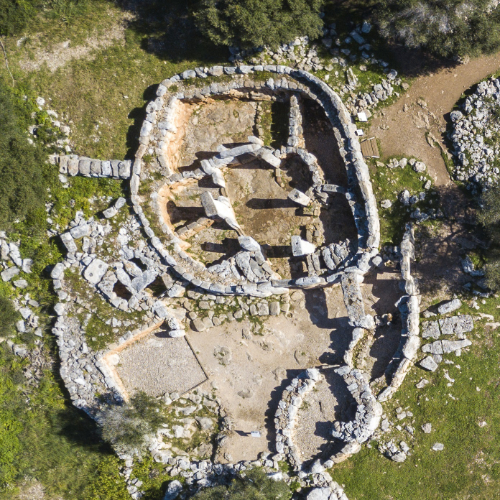 Circular houses or circles:
Circular houses or circles:
This name is given to the typical and exclusive dwellings of the Late Talayotic period in Menorca, due to their circular floor plan. They have a central courtyard from which the different rooms are accessed, arranged in a radial pattern. They are large and very monumental structures, with large ashlars and monolithic columns. They often have a large courtyard in front of the façade, delimited by a wall.
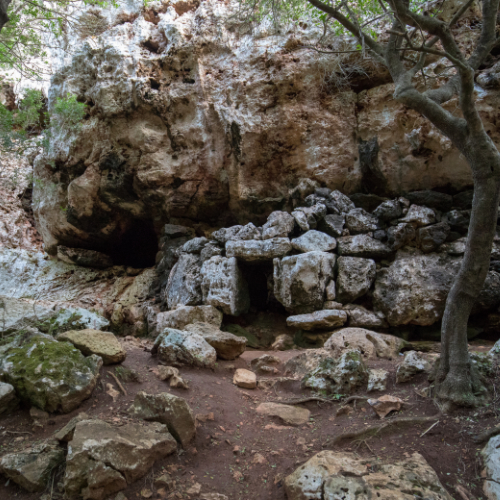 Burial cave
Burial cave:
Burial caves are natural cavities, which were used as collective sepulchres. In some cases, as in the Cova des Pas, there are no modifications at all. In other cases, a cyclopean wall (with large stones) was built at the entrance, so that access to the cave was reduced to a small entrance. This is the case of the Es Càrritx and Biniedrís caves.
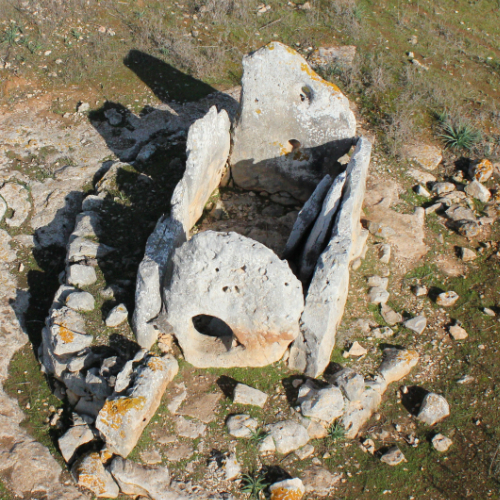 Dolmen
Dolmen:
Collective tomb built using megalithic techniques. The burial chamber consisted of large stone slabs and was accessed through a small passageway. The whole complex was covered by a mound of earth and stones. These tombs are characteristic of the Neolithic, the Copper Age and the Early Bronze Age in Western Europe and North Africa. In Menorca, they correspond to the earliest periods of settlement on the island. The custom of building these tombs is one of the cultural traits that came to Menorca with the first settlers.
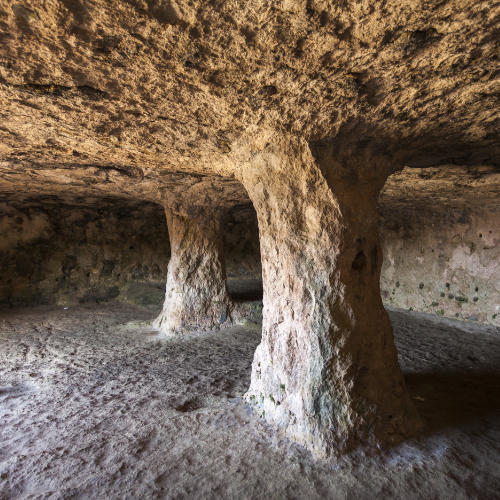 Hypogeum
Hypogeum:
Hypogeum are artificial caves dug into the rock. They were collective funerary spaces. During the earliest prehistoric phases of the island's history, there were some elongated hypogeum. Later, during the Late Talayotic period, larger hypogea were excavated, with pillars cut into the rock itself, as well as chapels that create differentiated spaces. Some of these hypogeum have something like a courtyard carved into the rock, in front of the entrance door, which was filled with rainwater. Talayotic hypogeum are usually grouped together in necropolises, such as the one at Calescoves.
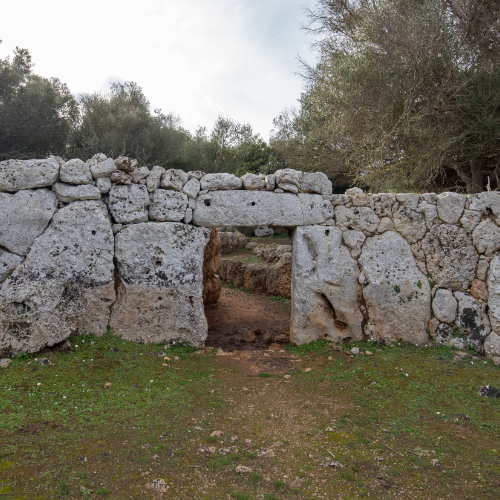 Defensive wall
Defensive wall:
Defensive structure that surrounded a settlement. In Menorca there are some walls from before the Talayotic period, such as the one at Es Coll de Cala Morell, and from the early Talayotic period, such as the one at Caparrot de Forma. However, most of the walls date from the Late Talayotic period. They were built using cyclopean techniques. In the Son Catlar settlement, bastions were added, which are related to the Punic world.
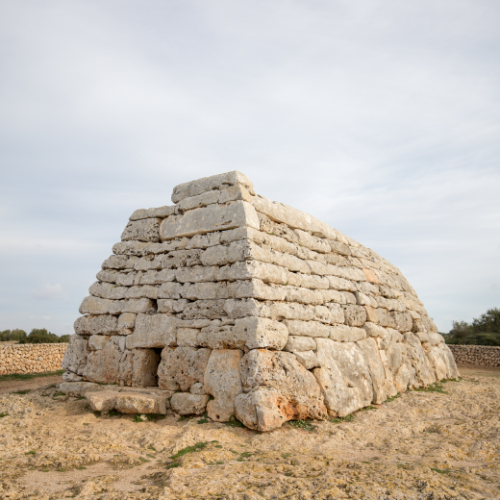 Funerary naveta
Funerary naveta:
A collective funerary building from the early Talayotic period, unique to Menorca and built using a cyclopean technique. Some navetas have a rounded floor plan, but others have a shape reminiscent of an inverted ship, which is what gives them their name. They are a type of building derived from dolmens.
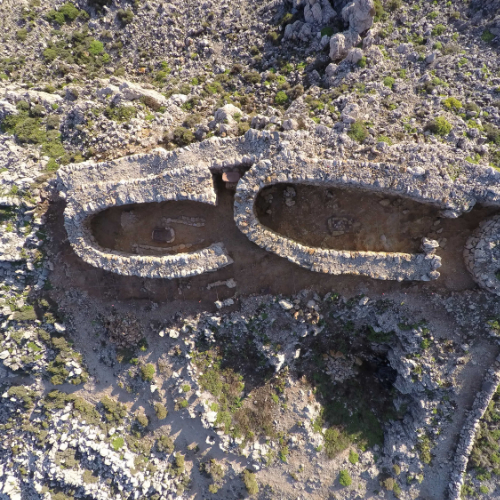 Dwelling naveta
Dwelling naveta:
A type of dwelling typical of Menorca and Mallorca during much of the Bronze Age, before the Talayotic period. These are long, uncompartmentalised constructions, generally built using cyclopean techniques. They were covered with wooden beams and branches, and then covered with a layer of clayey earth that prevented rainwater from entering.
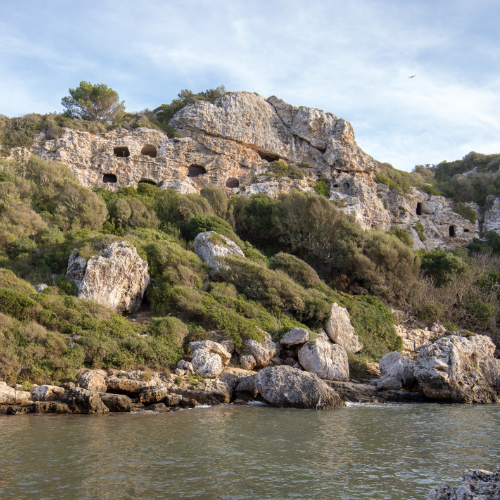 Necropolis
Necropolis:
A set of tombs. The term comes from Greek and literally means city of the dead. In Menorca, the hypogea from the Talayotic period are often grouped together in necropolis, on the walls of coves and ravines. The best known and most extensive is the one in Calescoves, with nearly a hundred hypogeum.
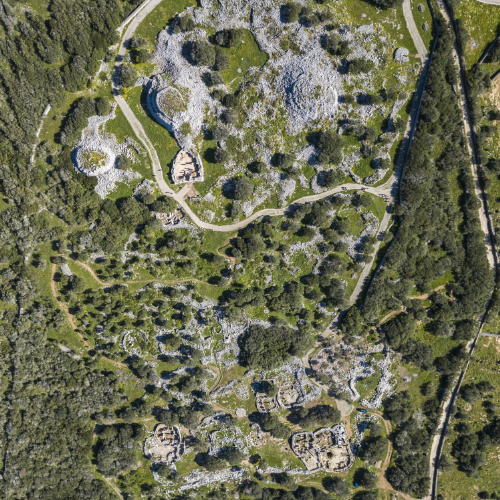 Settlement
Settlement:
Throughout Menorca's prehistoric times, a large part of the population lived in groups of houses known as settlements.
At the time of the navetas, before the Talayotic period, the settlements were small, and there are even isolated dwellings or dwellings in pairs. The largest settlements from this period have around fifteen houses, such as in Es Coll de Cala Morell.
During the Talayotic period, we find larger settlements structured around one or more talayots. These settlements reached their maximum extension during the Late Talayotic period. At this time, some settlements covered an area of more than 4 hectares, as is the case of Son Catlar, which probably housed hundreds of people. During this period, taula enclosures were built in the most important settlements and, in some cases they also added defensive walls.
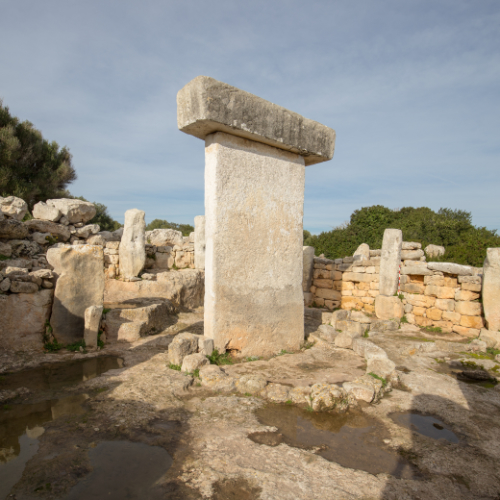 Taula enclosure
Taula enclosure:
The taula enclosures are the religious buildings typical of the Late Talayotic period and exclusive to Menorca. They have a horseshoe-shaped floor plan with a slightly concave façade. In the centre of the structure there is always a T-shaped element formed by two large slabs placed one on top of the other (the taula itself). Inside, bronze and terracotta figurines representing various divinities have been found. Evidence of rituals involving the consumption of meat and wine has also been documented. It is also known that their orientation was related to the location of the stars at specific times of the year, especially the position of the sun during the winter solstice. There is only one taula enclosure per village (and not all of them have them), except in So Na Caçana, where there are two.
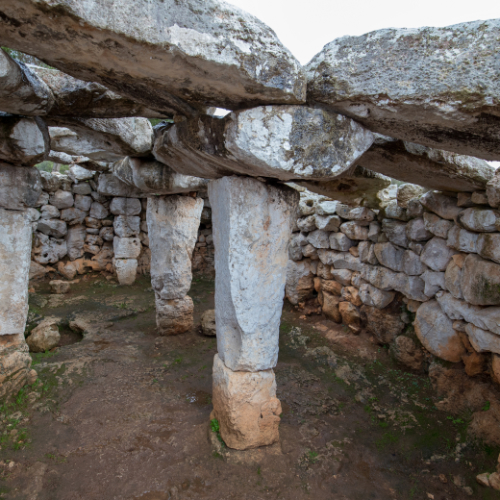 Hypostyle hall
Hypostyle hall:
This construction dates from the final phase of the Talayotic culture. They have a ceiling made of large stone slabs, supported by a series of polylithic columns (built with several superimposed stone blocks). They usually appear next to the houses and may have been used for storage. There are other types of hypostyle rooms, which appear in isolation (such as the one at Galliner de Madona), whose function and chronology are not yet known with certainty.
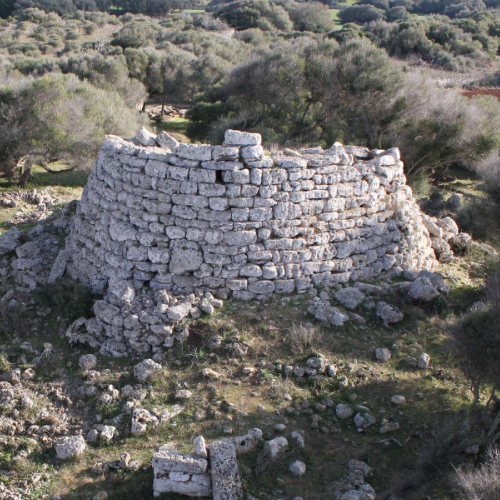 Talayot
Talayot:
A large, generally truncated cone-shaped structure, built using cyclopean techniques. Talayots are buildings exclusive to Menorca and Mallorca, and give their name to the Talayotic culture. However, there are important differences between the talayots on the two islands. The Menorcan talayots are of more varied sizes and it seems that the usable space was generally located in the upper part of the building. They are usually located in the centre of the villages, although there are also some isolated ones. In both cases, they are prominent features in the landscape. A single settlement may have up to five talayots. These elements form networks of intervisibility: from the top of one talayot you can always see others.